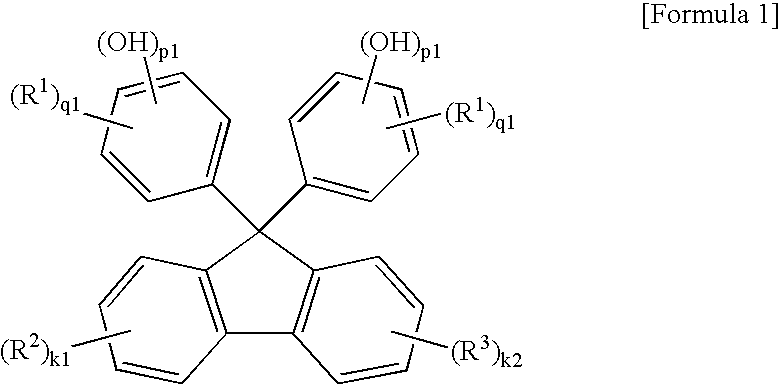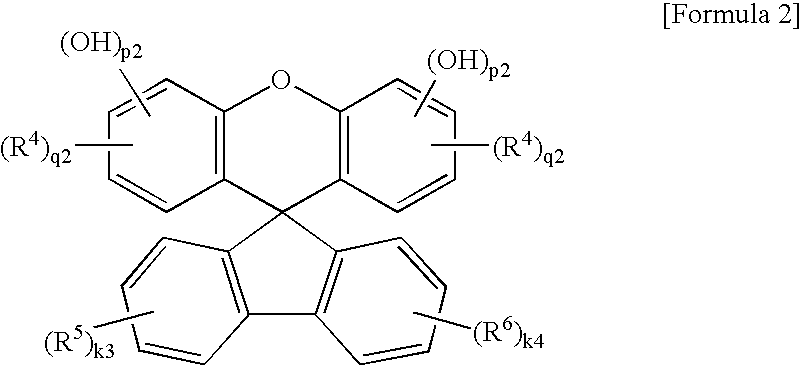Resine Composition For Printed Circuit Board and Composite Substrate And Copper Laminates Using The Same
a technology of printed circuit board and composite substrate, applied in printed circuits, electrical equipment, metal layered products, etc., can solve the problems of increasing transmission loss and signal delay time, and void occurrence, so as to prevent the occurrence of voids, improve physical properties, and achieve formability and processibility.
- Summary
- Abstract
- Description
- Claims
- Application Information
AI Technical Summary
Benefits of technology
Problems solved by technology
Method used
Image
Examples
example 1
[0061](Preparation of a Resin Composition)
[0062]As noted in Table 1, 30 parts by weight of polyphenylene ether (Nornyl PX9701, available from GE) having a number-average molecular weight of 2,000 to 20,000, 0.3 parts by weight of 9,9-bis(3-methyl-4-hydroxyphenyl)fluorene (BCF), 0.27 parts by weight of t-butylperoxy isopropylmonocarbonate (PB-I, available from Nippon Oil & Fats) as a radical initiator, and 0.008 parts by weight of cobalt naphthanate having a cobalt content of 6% as a catalyst were mixed, and were subjected to a reaction at 90° C. for 60 minutes to provide a polyphenylene ether resin modified to have a number-average molecular weight of 12,500.
[0063]To the modified polyphenylene ether resin, 10 parts by weight of a styrene-butadiene block copolymer (Tufprene A, available from Asahi Kasei) as a polymer binder, 50 parts by weight of cyanate ester (PT-15, available from Lonza), 10 parts by weight of brominated organic flame retardant (Planelon BDE, available from Mitsui ...
example 2
[0066]A resin composition and a composite substrate were obtained in the same manner as described in Example 1, except that a styrene-butadiene block copolymer, cyanate ester, and a flame retardant were used in an amount of 5 parts by weight, 60 parts by weight, and 5 parts by weight, respectively, as noted in Table 1.
example 3
[0067]A resin composition and a composite substrate were obtained in the same manner as described in Example 1, except that benzoyl peroxide was used as a radical initiator, instead of t-butylperoxy isopropylmonocarbonate (PB-I, available from Nippon Oil & Fats) as noted in Table 1.
PUM
| Property | Measurement | Unit |
|---|---|---|
| Heat resistance | aaaaa | aaaaa |
| size | aaaaa | aaaaa |
| weight | aaaaa | aaaaa |
Abstract
Description
Claims
Application Information
 Login to View More
Login to View More - R&D
- Intellectual Property
- Life Sciences
- Materials
- Tech Scout
- Unparalleled Data Quality
- Higher Quality Content
- 60% Fewer Hallucinations
Browse by: Latest US Patents, China's latest patents, Technical Efficacy Thesaurus, Application Domain, Technology Topic, Popular Technical Reports.
© 2025 PatSnap. All rights reserved.Legal|Privacy policy|Modern Slavery Act Transparency Statement|Sitemap|About US| Contact US: help@patsnap.com



